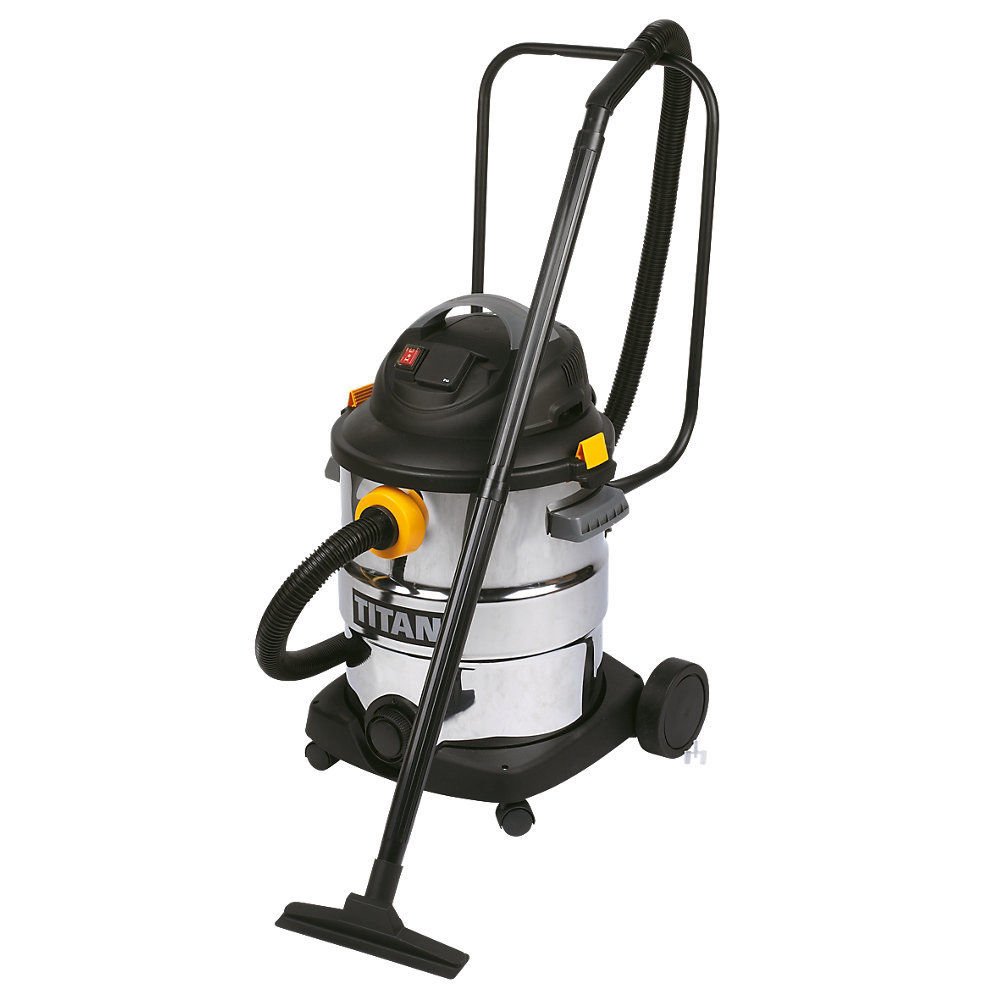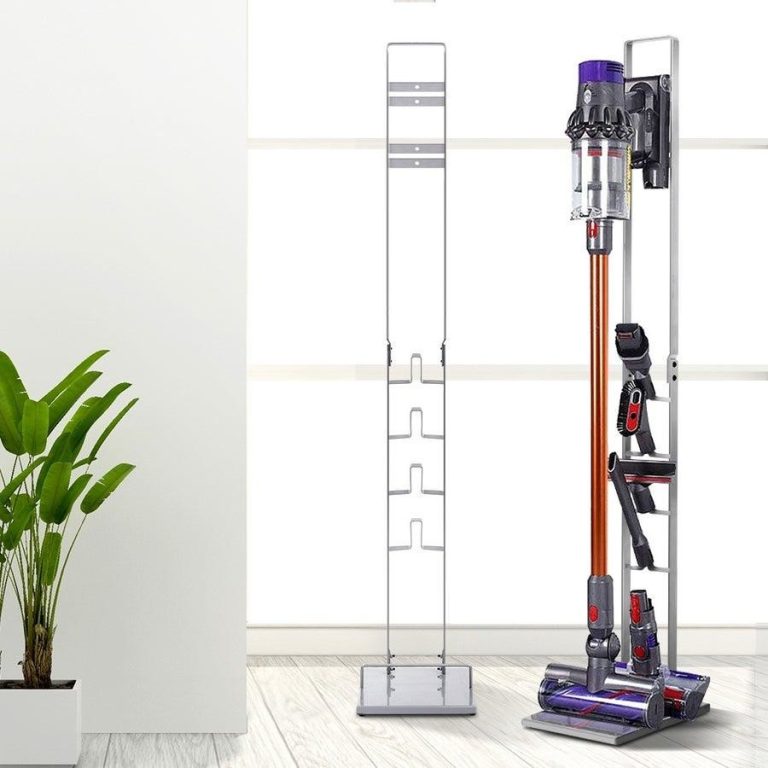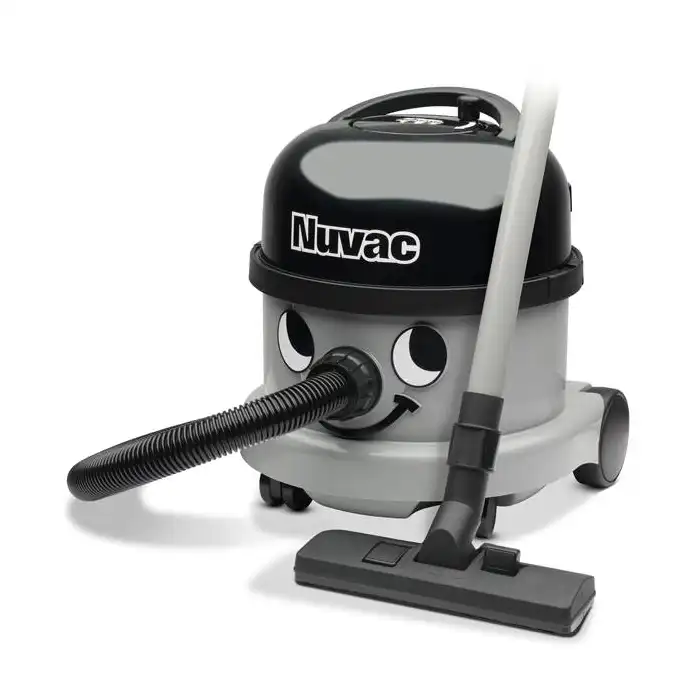The Dawn of Vacuum Cleaning: Initial Concepts and Patents
How was the vacuum cleaner invented? The story of how the vacuum cleaner was invented begins in the 19th century. Early attempts to create a machine that could remove dust from floors started with manual devices. These were not vacuums in the true sense, as they relied on bellows or brushes to sweep, rather than suction to remove dirt.

The first patent for an actual ‘vacuum cleaner’ dates back to 1858. It was issued to Hiram H. Herrick for a ‘carpet sweeper’. Herrick’s design showed initial concepts, but it was rudimentary. It lacked the power and effectiveness of later models. Nonetheless, this patent marked the beginning of a journey towards mechanized cleaning solutions.
In 1860, another patent was granted to Daniel Hess. His device included a bellows for suction and rotating brushes. While inventive, it was not a practical solution; it required manual labor to operate.
Later, in 1869, Ives W. McGaffey patented the ‘Whirlwind’. This hand-cranked machine was an improvement. It offered somewhat more convenience, but it was still cumbersome and tiring to use.
These initial concepts and patents laid the groundwork for more advanced technologies. As industrial advancements continued, inventors sought to harness electric power to improve the efficiency of these machines. This pursuit would eventually lead to a revolution in vacuum technology and home maintenance.
From Brooms to Suction: A Timeline of Vacuum Cleaner Development
The journey from brooms to suction-based cleaning reflects a major leap in home maintenance. After initial inventions in the 19th century, the timeline of vacuum cleaner development showcases significant milestones.
- 1876: Melville Bissell patented a carpet sweeper in response to his wife’s frustration with cleaning sawdust in their crockery shop. This device was easier to handle and offered a step forward from manual brooms.
- 1898: John S. Thurman invented a gasoline-powered ‘pneumatic carpet renovator’. He offered services rather than selling the machines, illustrating an early ‘cleaning service’ model.
- 1901: Hubert Cecil Booth observed a demonstration of a device blowing dust off chairs and thought of reversing the process. This led to the invention of the first powered vacuum cleaner using suction. His ‘Puffing Billy’, powered by an internal combustion engine, was too large to enter homes and required horses to transport it.
As the timeline advanced, inventors refined the concept of suction. They worked towards machines that were more practical for everyday use. This period was vital, as each leap paved the way for the electric vacuum cleaners that would soon revolutionize household cleaning.
The use of ‘suction’ became a key element in vacuum cleaner design. It vastly improved the efficiency and ease of cleaning. These developments set the stage for the next major advancements in the field of vacuum technology.

The Pioneers of Vacuum Technology: Notable Inventors and Innovations
The era of vacuum technology pioneers featured titans of innovation that changed cleaning forever. A few stand out for their contributions to this revolutionary tool.
- Hubert Cecil Booth: We’ve mentioned how he flipped the idea of blowing dust away with a device to sucking it up. His creation, the “Puffing Billy”, though cumbersome, was pivotal. It brought the power of suction to public attention in 1901.
- James Murray Spangler: A janitor suffering from asthma, Spangler’s personal need led to ingenuity. In 1907, he assembled the first portable electric vacuum cleaner using a fan motor and a pillow case. Spangler’s design was the blueprint for modern vacuums.
- William Hoover: Spangler’s cousin, Hoover bought the patent for the electric vacuum cleaner. He saw its potential for home use. Under Hoover’s business acumen, the ‘Hoover vacuum cleaner’ became a household name. His marketing savvy also introduced the practice of ‘door-to-door’ sales approaches.
- Axel Wenner-Gren: He introduced the Model V, the first vacuum cleaner with a canister design in 1921. This leap made the vacuum cleaner more user-friendly and stylish.
These inventors and their innovations accelerated the vacuum cleaner’s journey from a luxury item to a household necessity. Their resourcefulness laid down the blueprints for future developments in vacuum technology. Every time we effortlessly clean our floors, we owe a nod to these pioneers who thought about how the vacuum cleaner was invented and made it better for all of us.

The Advent of Electric Vacuum Cleaners: Revolutionizing Household Cleaning
The advent of electric vacuum cleaners marked a turning point in household cleaning. Before their invention, cleaning floors was a labor-intensive task. The year 1907 stands out in history. This was when James Murray Spangler, the janitor with asthma, crafted a solution to his woes. He turned a fan motor, a box, and a pillowcase into the first electric vacuum cleaner. Electricity-powered devices introduced newfound convenience and efficiency.
Spangler’s invention was compact and could be used within the home, unlike the gasoline and horse-drawn predecessors. It was the blueprint for modern electric vacuum cleaners. William Hoover saw the potential in Spangler’s design. He bought the patent and took the electric vacuum cleaner to the masses. Hoover’s company made these devices a staple in homes worldwide.
Electric vacuum cleaners revolutionized how we maintain our living spaces. They transformed the act of cleaning from an exhausting ordeal into a more manageable chore. The transition from manual cleaning methods to electric devices was quick. By the 1920s, vacuum cleaners had shed their status as luxury items. They were on their way to becoming routine household tools.
The keyword “how was the vacuum cleaner invented” speaks to this pivotal moment. It marks the introduction of electric vacuum cleaners, altering the cleaning landscape forever. With the push of a button, we could now keep our homes dust-free with much less effort. This was a radical improvement and a significant step in the history of home appliances.
The Evolution of Design: From Bulky Machines to Sleek Appliances
When pondering ‘how was the vacuum cleaner invented’, design evolution is clear. Initially, vacuum cleaners were bulky and unattractive. Over time, their design has undergone major changes, making them sleek, stylish, and much more practical for everyday use.
Early vacuum cleaners were cumbersome, requiring physical strength to operate. They resembled complex machines more than household appliances. ‘Puffing Billy’, for example, was so large it had to be transported by horses. Even the first portable electric vacuum cleaners were hefty and not easy to store.
As technology advanced, the designs became smaller and more efficient. The 1930s saw the introduction of more compact and upright models, making vacuums easier to handle and store. Innovations continued, and the 1950s brought vacuums that were lighter and more colorful, fitting the era’s aesthetic.
In the 1960s and 1970s, further advancements were made. New materials and improved engineering led to even lighter and more efficient models. Vacuums started becoming a feature of interior decor, rather than just a cleaning tool.
Moving into the late 20th and early 21st centuries, vacuum cleaners have become sleeker and more sophisticated. They now incorporate advanced technology, ergonomic designs, and versatile features for different types of floors and debris. Today’s vacuum cleaners come in various forms: upright, canister, stick, handheld, and robotic.
Beyond appearance, functionality has greatly improved. They’re quieter, more powerful, and packed with features like HEPA filters and cyclonic suction. Some can even be controlled remotely using smartphone apps. This design evolution reflects the continuous quest to make cleaning easier, more efficient, and integrated into modern lifestyles.
Impact on Society: How Vacuum Cleaners Changed Home Maintenance
Vacuum cleaners have had a profound impact on society, particularly in the realms of home maintenance and cleanliness standards. Before the advent of these appliances, keeping a home dust-free was a grueling task. It often required manual labor for hours, with brooms and dustpans being the primary tools. The invention and widespread adoption of vacuum cleaners have transformed this chore, offering several vital improvements:
- Reduced Physical Strain: Prior to vacuum cleaners, cleaning was physically demanding. The suction power of vacuums has diminished the need for intense manual work.
- Time Efficiency: Vacuum cleaners have cut down the time required for cleaning tasks, allowing for more leisure or other activities.
- Improved Hygiene: The ability of vacuums to remove finer particles of dust and allergens has improved the overall cleanliness and health within homes.
- Accessibility for the Elderly and Disabled: Lightweight and easy-to-use vacuums have made it possible for more people, including the elderly and those with physical disabilities, to clean their homes effectively.
- Professional Cleaning Services: With powerful commercial vacuums entering the market, professional cleaning has become more efficient, creating jobs and services.
- Cultural Shifts: The rise of the vacuum cleaner has also led to cultural shifts, with cleanliness becoming an achievable standard for the majority of households.
In essence, asking ‘how was the vacuum cleaner invented’ taps into a larger narrative about technological advancement and its societal benefits. The evolution from rudimentary sweeping methods to the sophisticated vacuuming technology of today demonstrates a significant leap forward in home maintenance. Vacuum cleaners, once luxury items, are now indispensable tools in the quest for a clean, hygienic, and comfortable living environment.
Advancements in the 20th Century: Enhancing Efficiency and Performance
The 20th century brought significant changes to the vacuum cleaner‘s design and capabilities. Inventors and engineers worked tirelessly to make vacuum cleaners more efficient and easier to use. Here are some key advancements that marked this era:
- Improvements in Motor Technology: The motors became more powerful and reliable. The increase in suction power made vacuums more effective at picking up dirt and debris.
- Introduction of Disposable Bags: The use of disposable bags began in the 1920s. These allowed for easier and more hygienic disposal of collected dust.
- Development of Upright Models: The upright vacuum cleaner was introduced, offering a more ergonomic design. Users no longer had to drag heavy machines around.
- Wider Range of Attachments: Different attachments were developed to tackle various cleaning tasks. These made vacuums more versatile for cleaning furniture, drapes, and hard-to-reach areas.
- Compact and Lightweight Models: As materials and designs improved, vacuum cleaners became more compact and lighter. This made them more manageable for daily use.
- Rise of Bagless Vacuums: In the late 20th century, bagless vacuums emerged. These employed cyclonic technology to separate dirt from the air without the need for a bag.
- Cordless Technology: Rechargeable, battery-operated vacuums began to appear. They offered the convenience of cord-free operation, making quick cleanups easier.
The Modern Era: Smart Vacuums and the Future of Cleaning Technology
The history of the vacuum cleaner now leads us to the modern era. Here, smart vacuums signify the future of cleaning technology. Making life easier, these advanced machines pair with apps for remote control. They even learn the layout of your home for optimized cleaning.
Let’s delve into how the vacuum cleaner’s invention has evolved into today’s smart devices:
- Smart Home Integration: Vacuum cleaners now sync with smart home systems. This allows for voice control and scheduled cleaning.
- Automated Cleaning Patterns: Advanced sensors enable smart vacuums to navigate around objects. They clean in systematic patterns for complete coverage.
- Self-Emptying Features: Some models empty their dust bins automatically. This adds to the convenience and limits human interaction.
- Battery Life Advancements: Improved battery technology boosts run time. This gives enough power to clean larger areas on a single charge.
- HEPA Filtration and Allergen Lock: Modern vacuums often have HEPA filters. They trap fine particles, locking away allergens more effectively.
- Machine Learning: Through machine learning, vacuums get smarter with every use. They adapt cleaning methods to better suit your home’s needs.
These features point to a brighter, cleaner future. They stand on the shoulders of the past inventors mentioned with the keyword ‘how was the vacuum cleaner invented’. As we embrace these innovations, we welcome a new chapter of effortless home maintenance.


